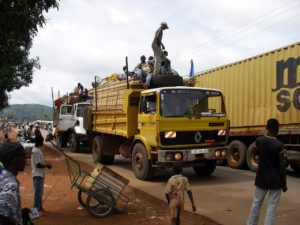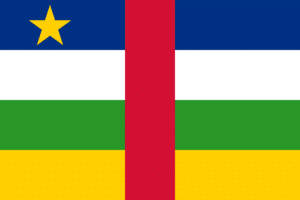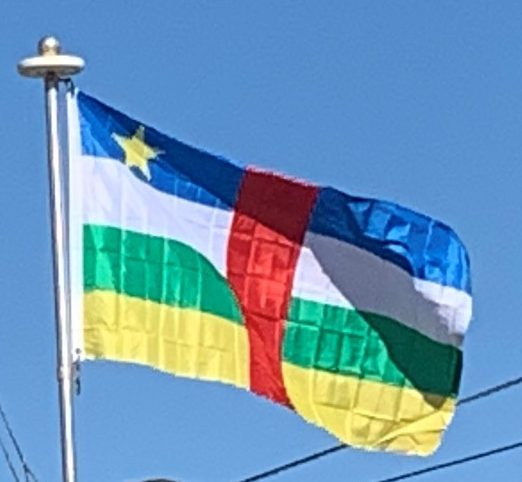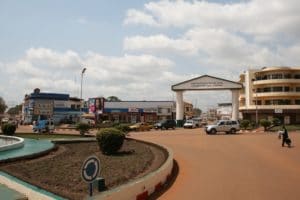Agriculture is dominated by the cultivation and sale of food crops such as cassava, peanuts, maize, sorghum, millet, sesame, and plantain. The annual real GDP growth rate is just above 3%. The importance of food crops over exported cash crops is indicated by the fact that the total production of cassava, the staple food of most Central Africans, ranges between 200,000 and 300,000 tonnes a year, while the production of cotton, the principal exported cash crop, ranges from 25,000 to 45,000 tonnes a year. Food crops are not exported in large quantities, but still constitute the principal cash crops of the country, because Central Africans derive far more income from the periodic sale of surplus food crops than from exported cash crops such as cotton or coffee. Much of the country is self-sufficient in food crops; however, livestock development is hindered by the presence of the tsetse fly.
The Republic’s primary import partner is the Netherlands (19.5%). Other imports come from Cameroon (9.7%), France (9.3%), and South Korea (8.7%). Its largest export partner is Belgium (31.5%), followed by China (27.7%), the Democratic Republic of Congo (8.6%), Indonesia (5.2%), and France (4.5%).
Transportation:
Bangui is the transport hub of the Central African Republic. As of 1999, eight roads connected the city to other main towns in the country, Cameroon, Chad and South Sudan; of these, only the toll roads are paved. During the rainy season from July to October, some roads are impassable.

River ferries sail from the river port at Bangui to Brazzaville and Zongo. The river can be navigated most of the year between Bangui and Brazzaville. From Brazzaville, goods are transported by rail to Pointe-Noire, Congo’s Atlantic port. The river port handles the overwhelming majority of the country’s international trade and has a cargo handling capacity of 350,000 tons; it has 350 metres (1,150 ft) length of wharfs and 24,000 square metres (260,000 sq ft) of warehousing space.
Bangui M’Poko International Airport is Central African Republic’s only international airport. As of June 2014 it had regularly scheduled direct flights to Brazzaville, Casablanca, Cotonou, Douala, Kinshasha, Lomé, Luanda, Malabo, N’Djamena, Paris, Pointe-Noire, and Yaoundé.
Since at least 2002 there have been plans to connect Bangui by rail to the Transcameroon Railway.
Flag of the Central African Republic:
The national flag of the Central African Republic was officially adopted in 1958. It has been retained since that time with the same design, four horizontal stripes of blue, white, green and yellow, and a single vertical band of red, with a yellow five-pointed star in the upper left corner.

The design consists of four horizontal stripes and one vertical stripe, and a single yellow five-pointed star in the upper left. The colors chosen are intended to be symbolic of France (blue and white) and Africa (green and yellow) with the red vertical stripe connecting them both in unity, and the respect that Europeans and Africans should have for each other. The yellow star is intended to be indicative of independence. The Constitution of the Central African Republic describes the flag as “four equal sized horizontal bands of the colours blue, white, green and yellow, perpendicularly barred in their centre by a red band of equal size and marked in the upper left corner by a yellow five-pointed star.”

